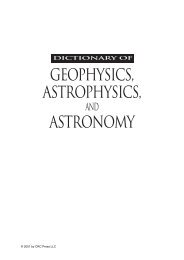tc dokuz eylül university institute of social sciences translation and ...
tc dokuz eylül university institute of social sciences translation and ...
tc dokuz eylül university institute of social sciences translation and ...
Create successful ePaper yourself
Turn your PDF publications into a flip-book with our unique Google optimized e-Paper software.
literature takes a position on the periphery, it employs secondary models which<br />
are already established in the home literary system, <strong>and</strong> it is a factor <strong>of</strong><br />
conservation. When the translated materials fulfill a place in a literature,<br />
<strong>translation</strong> as an act becomes important in the literary polysystem. What<br />
translators do is to search for new models <strong>and</strong> methods in translating. These<br />
models <strong>and</strong> methods, then, are foreign for the home literature. They mostly apply<br />
to foreignization (Schleiermacher). If the home literature accepts this, then it will<br />
be enriched <strong>and</strong> be more flexible. When translated literature is found in the<br />
central position, it does not mean that it will remain there forever; it may go back<br />
to the periphery later on.<br />
Polysystem theory is important for Translation Studies because (a)<br />
polysystem theory positions <strong>translation</strong> together with all manner <strong>of</strong> other texts, (b)<br />
polysystem extends the horizon <strong>of</strong> the researcher to the interaction between<br />
canonized <strong>and</strong> non-canonized literature, (c) historical research can be realized both<br />
synchronically <strong>and</strong> diachronically. (d) Also, it gives the opportunity to study the<br />
relations between <strong>translation</strong>s <strong>and</strong> non-<strong>translation</strong>s, between <strong>translation</strong>s <strong>and</strong><br />
discourses on <strong>translation</strong>s <strong>and</strong> between <strong>translation</strong>s <strong>and</strong> ideology or power on<br />
translating, <strong>and</strong> (e) it helps to underst<strong>and</strong> why translators behave in this or that way<br />
<strong>and</strong> what is the position <strong>of</strong> <strong>translation</strong>s in the target culture <strong>and</strong> also to determine<br />
strategies <strong>and</strong> positions <strong>of</strong> <strong>translation</strong>s (Zohar, 1990).<br />
Norms are like an extension <strong>of</strong> the polysystem theory, which functions as a<br />
general umbrella for norms, <strong>and</strong> they are a kind <strong>of</strong> tool to determine the <strong>translation</strong> in<br />
the polysystem. In it, not only the texts but also religion, ideology, literature <strong>and</strong><br />
culture are interrelated with each other. Everything in the world affects other things.<br />
Norms are actually not found but reconstructed. The norms have always been there.<br />
When translated texts are analyzed, it is seen that norms have already been there <strong>and</strong><br />
then they are reconstructed.<br />
By studying a certain period in culture, lots <strong>of</strong> information can be obtained<br />
about that period from translated materials. These are both textual <strong>and</strong> extra-textual<br />
sources. What is specifically observed is not what the translator has chosen, but why<br />
s/he has made such a choice.<br />
36
















